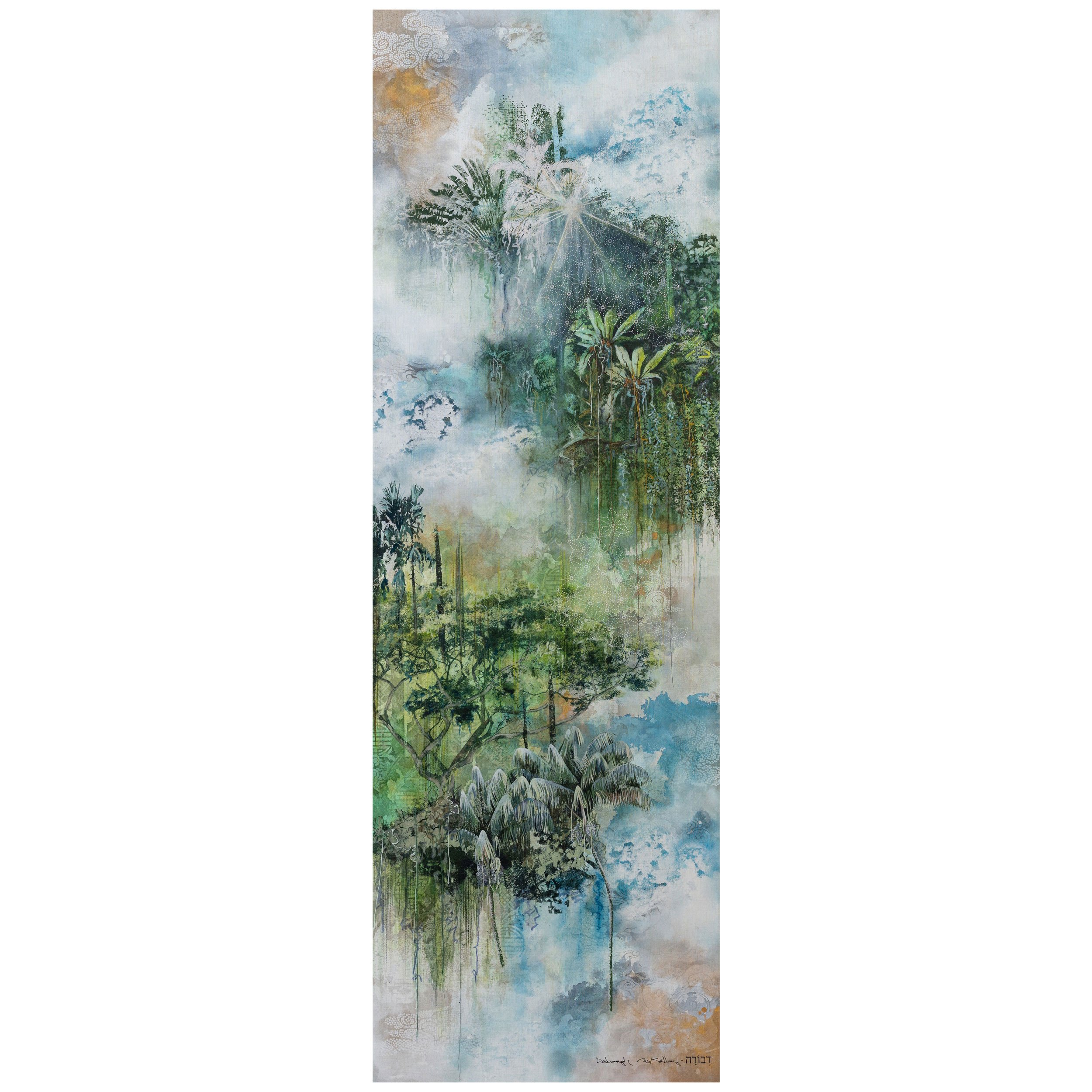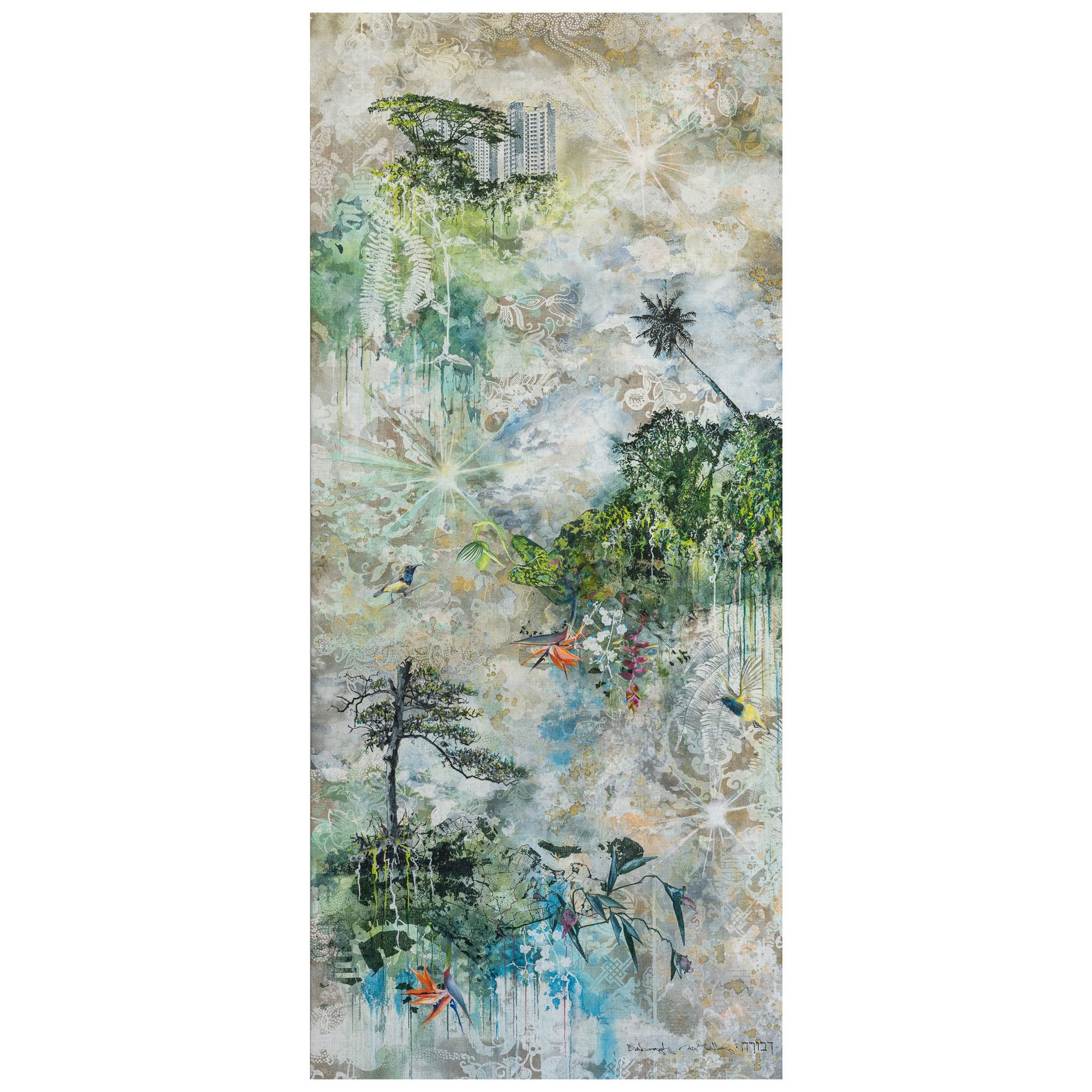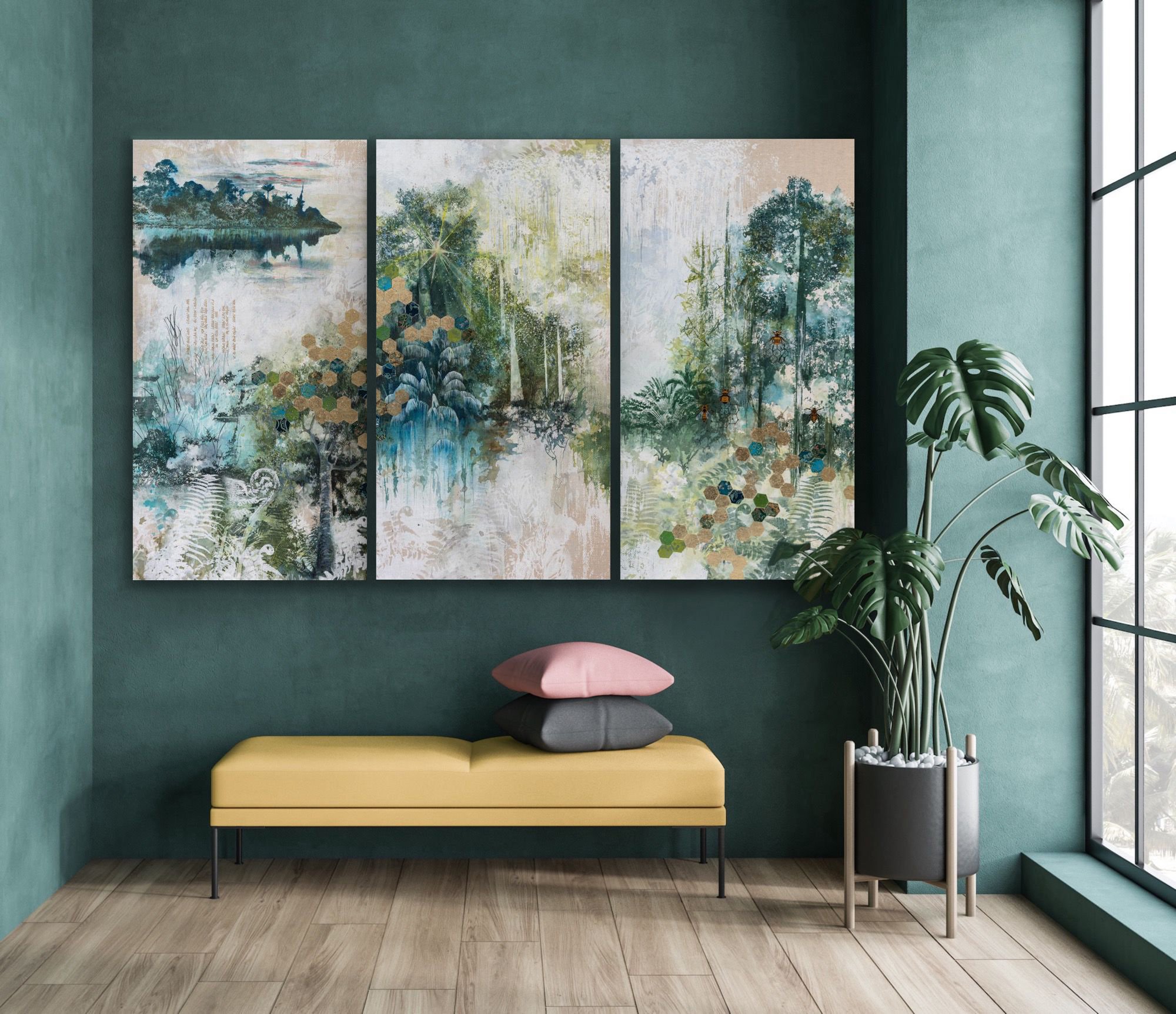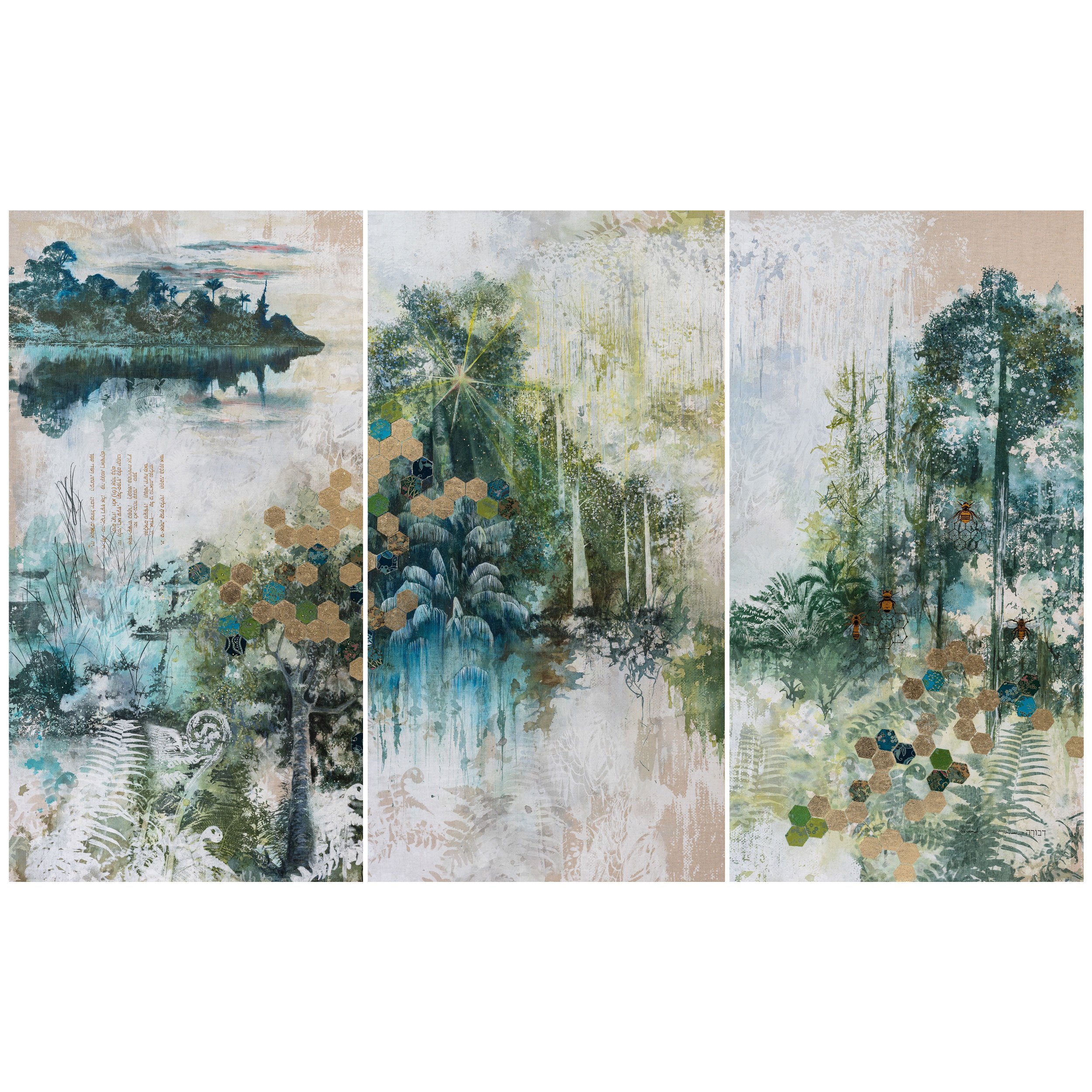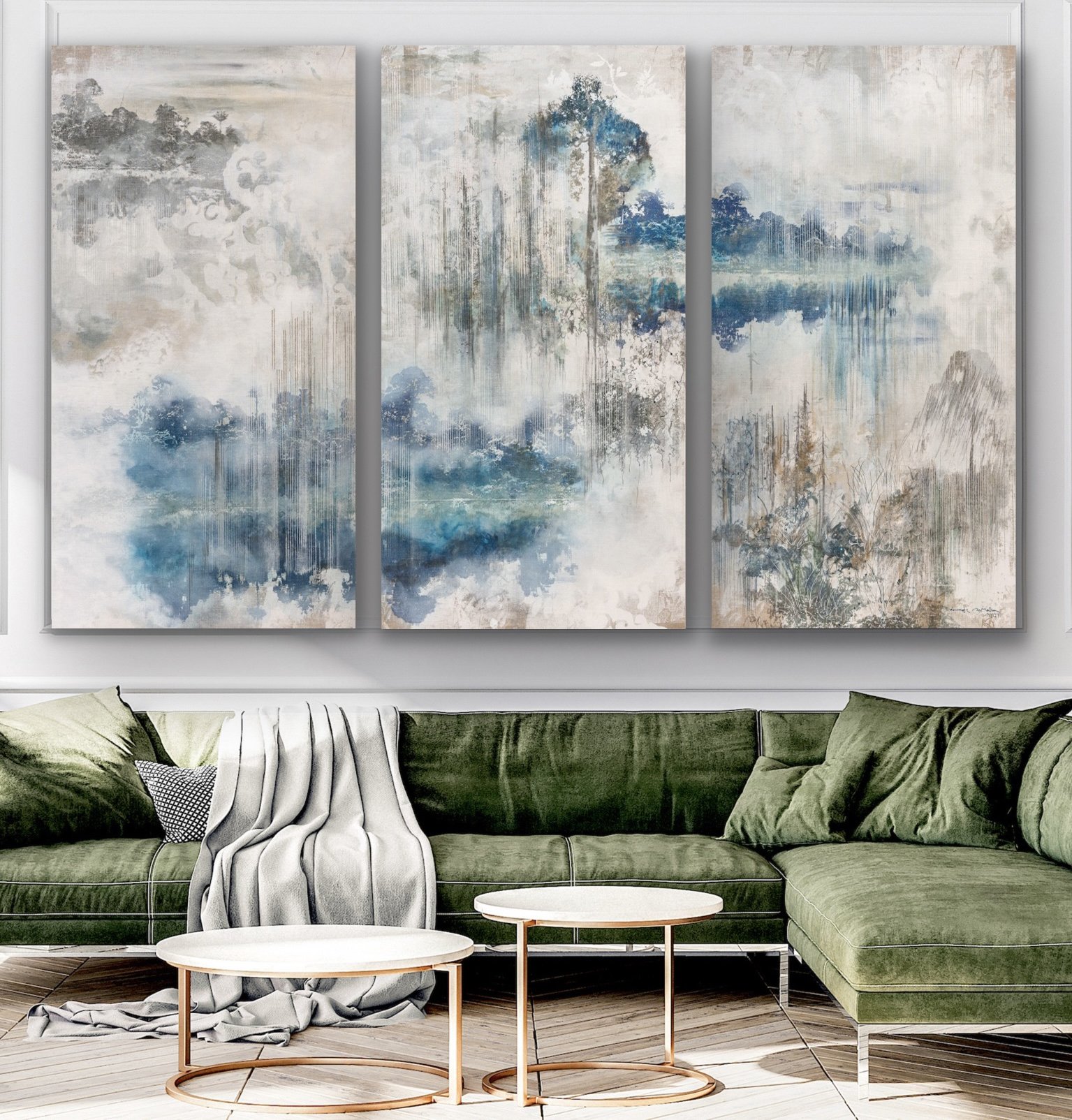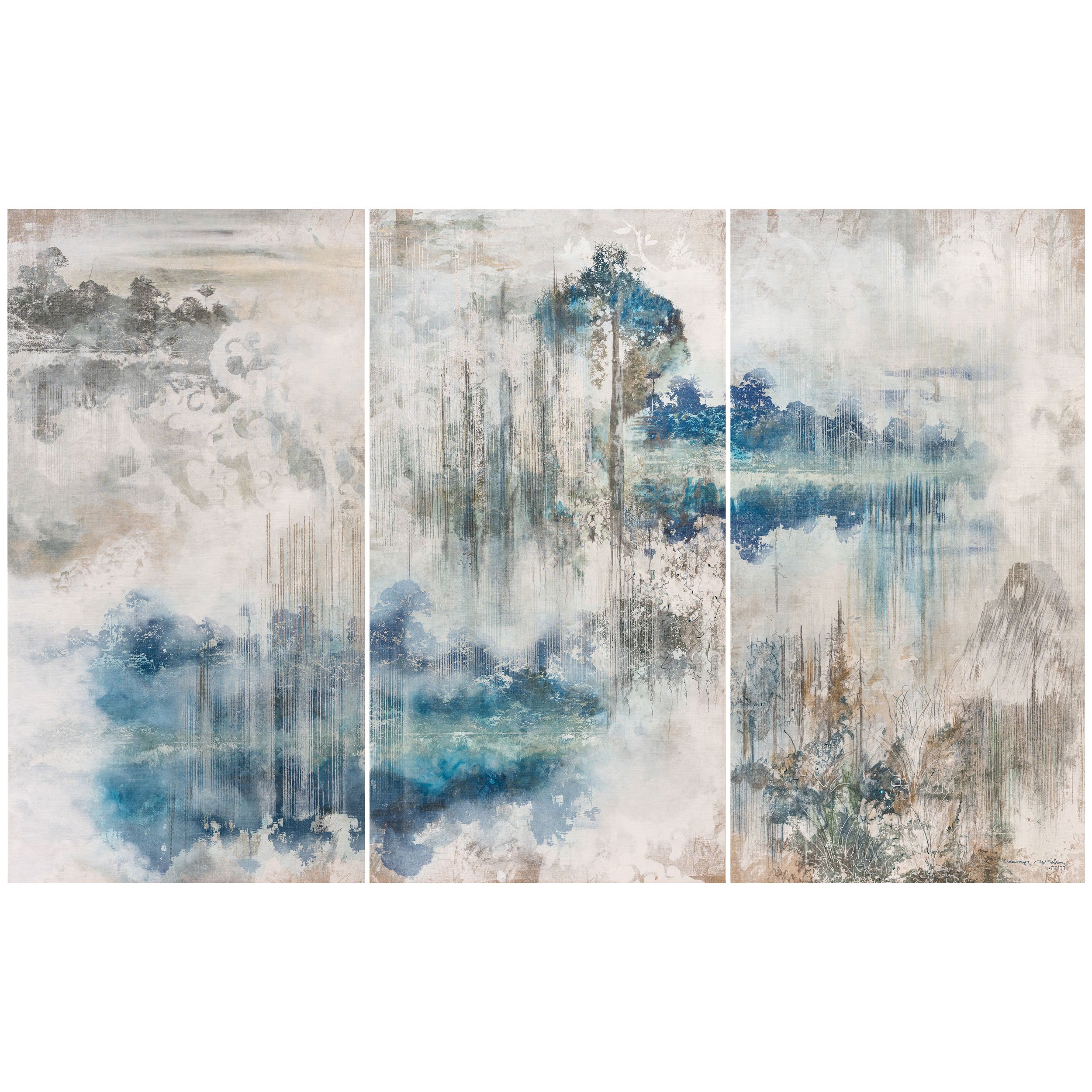Wabi Sabi
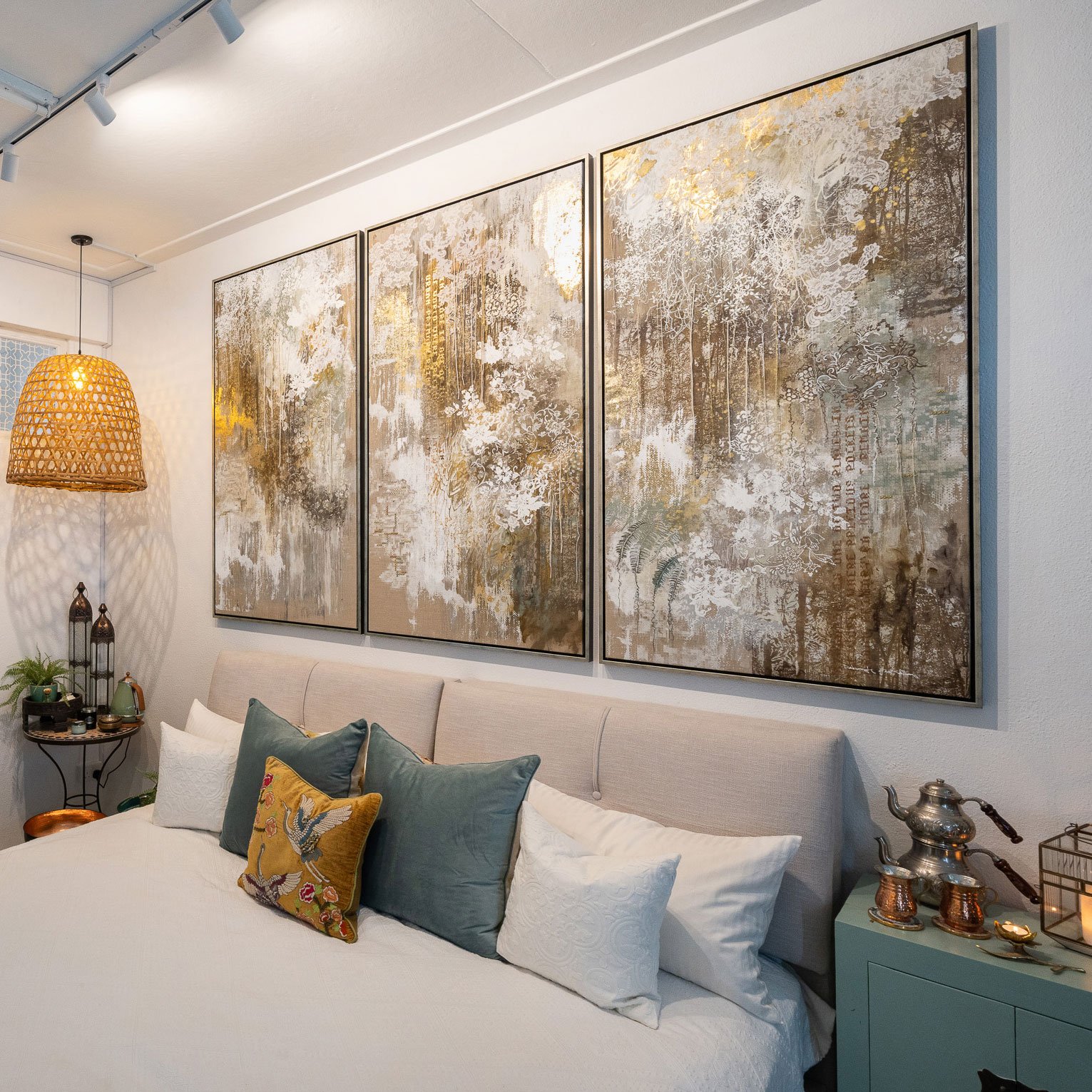

Wabi Sabi
Artwork Size
Sold as a set of 3 artwork panels (triptych)
Size with wooden frame: H164.7 x W89.6 cm per panel, total 3 panels
Size without wooden frame: H160 x W85 cm per panel, total 3 panels
275cm across all 3 artworks (with 1 inch gap between)
Size with wooden frame: H65 x W35 inches per panel, total 3 panels
Size without wooden frame: H63 x W33 inches per panel, total 3 panels
108 inches/9 feet across all 3 artworks (with 1 inch gap between)
End
Artwork Medium
Acrylic Painting, Silkscreen Printing on Canvas, Fabric Applique, Gold Leaf, Foiling on Linen Canvas
Canvas Artwork has wire at back of frame for hanging.
End
Artwork Description
This artwork is titled “Wabi Sabi”, as I found this philosophy and way of thinking very inspiring and helpful in a personal life challenge I was facing. Besides that particular painful period in my life, this is a philosophy that can be embraced throughout life’s seasons.
Lace is a texture that I have used repetitively in “Wabi Sabi”.
Lace is a delicate & fragile texture, reflecting the Wabi Sabi philosophy, which speaks of the fragility of life. The fragility of nature and the changing seasons. We all go through different phases in life, often these can be difficult or even traumatic times. The way we respond to these life challenges is important. We can either come out stronger, on the other side or let them permanently break us. Wabi Sabi is all about the mending and putting back together. Like lace we are delicate, but our lives are beautiful in their fragility.
Kintsugi is a Japanese art form that embodies the Wabi Sabi philosophy. Kin is the Japanese word for gold, while Sugi is repairing, mending and joining .
Kintsugi takes broken porcelain and instead of throwing it away, as consumer culture would do, it cherishes the item and repairs it back into a functional item. A tea cup that has been repaired, now has cracks filled in with gold.
Appreciating flaws as a part of a story rather than hiding them. Highlighting the cracks and repairs as a part of the life journey of the object, instead of letting the damage indicate the end of its utility. In a similar way when we go through pain in our life journey we can choose to mend and heal, and in the end come out with gold, strengthened from the experience.
Beautiful porcelain objects can be found all over the world. In “Wabi Sabi” I use patterns taken from Chinese porcelain as a reflection of my location in Singapore.
Detailed embroidery work was added to the final layers of “Wabi Sabi”. Wabi Sabi values craft and the handmade, which is why hand embroidery was an integral part of the creation. Loose threads have been attached, like the vines that hang from forest trees , these threads sway in breeze, a movement that is peaceful and reminds you of a walk in the forest.
Japanese Zen gardens have used the meditative process of raking to create patterns in the sand for hundreds of years. With this in mind, I became immersed in my canvas as I used an bamboo rake and a broom to create the base layer textures on my canvas. This was a really enjoyable process, exploring these different tools to create gestural marks.
For the colour palette I dipped my broom in shades of whites, linens and stone greys, these are natural and calming. In contrast to these neutral tones, a sparkling gold is added. The glimmers of gold remind us to be reflective, slow down and enjoy the details of our lives. The patches of gold also remind me of dappled sunlight that shines through the trees in a forest .
Wabi Sabi shows a respect for nature. With this in mind I took photographs of the huge trees found in the Singapore rainforest. Once again bringing this artwork back into a Singaporean context. This artwork stretches to almost 3 metres long, because of the sheer size the viewer is immersed in the piece. In a sense you get to enter into the forest, experience the grandeur of the trees and expanse of calming colours.
This artwork creates an atmosphere that is calm and relaxing, appreciating life and its seasons. Wabi Sabi embraces the concept for valuing a gratitude for simple but fleeting life states. It also values the natural world. It allows us to pay more attention to things that give us meaning.
End
Artwork Viewing
Please email us to arrange for a studio appointment; in email please mention original artwork(s) you are interested in viewing.
For international clients, a video call (Zoom or Whatsapp) can be arranged.
End
Shipping & Delivery
For local orders, delivery and installation can be arranged.
For international orders, canvas artworks will be taken off the frame and delivered rolled up in a sturdy cardboard tube. Framing instructions will be included, which can be taken to any framer.
End
Looking for something more affordable?
This artwork is also available as a canvas print, please click here.




